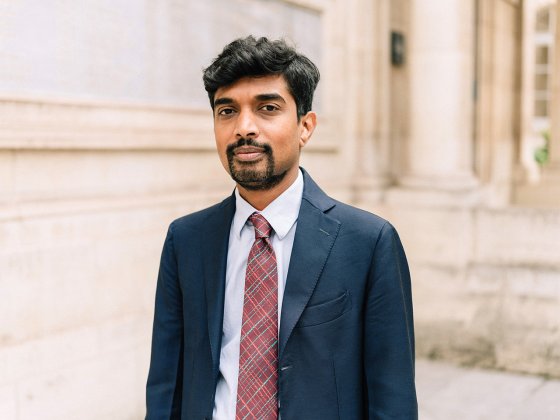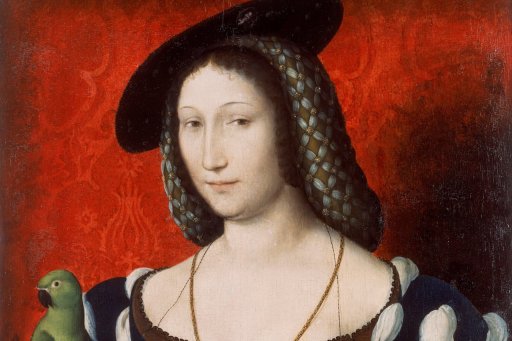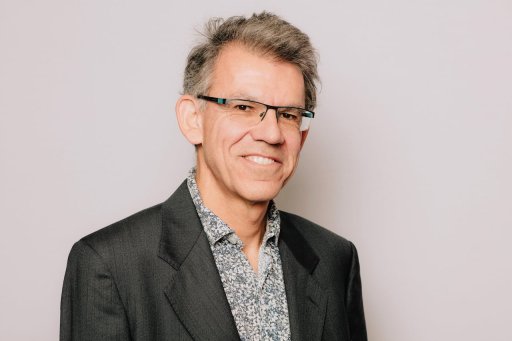
Naveen Kanalu Ramamurthy holds a doctorate in history and is a specialist in the Mughal Empire. He has been awarded this year's Collège de France Award for his ambitious and skilfully interdisciplinary work. Also a linguist, his research combines administrative history, law, economics and Islamic studies. Naveen Kanalu Ramamurthy is a senior lecturer at EHESS, where he holds the chair. Pour une histoire institutionnelle de l'Empire moghol : Droit, pouvoir et économie politique en Asie du Sud (XVIIth-XVIIIth siècles).
The Mughal Empire lasted in India for several centuries, but your thesis focuses on the years 1650 to 1720. Why did you choose this particular period ?
Naveen Kanalu Ramamurthy : Indeed, the Mughal Empire was founded in 1526, and although it declined from the beginning of the XVIIIthcentury, it disappeared with its last emperor in 1857, during the Cipaye revolt. I have concentrated on the years 1650 to 1720 for several reasons. Firstly, this period is perhaps the most controversial in Indian history. Even today, it's widely frowned upon, regardless of historiographical trends or ideologies... At the time, the Mughals were Muslim rulers who ruled over a predominantly non-Muslim population made up of Hindus, Sikhs and Jains. The reign of Emperor Aurangzeb, which lasted almost fifty years (1658-1707), is often disparaged as being associated with Muslim orthodoxy. He is considered rigorous and violent. He is criticized for destroying several Hindu temples and building mosques in their place. It should be remembered that this took place in particular political contexts, during conflicts with chiefs or religious groups. He was also criticized for re-establishing the jizya, which in Muslim law is the head tax payable by non-Muslims. In reality, this applied to a very small proportion of the population. Several groups are exempt, such as women, children, the sick, those with no income... However, this remains negative in the Indian collective imagination. There is also a tendency to consider that Mughal law was inapplicable : how could a Muslim law apply to non-Muslims ? In the supposed absence of an effective legal system, Aurangzeb is portrayed as a despot, making decisions arbitrarily. Unfortunately, these controversial issues are not studied enough, and that made me curious !
To understand how the state was really run in the Mughal Empire, I studied the law of the time. We're talking about Hanafi law, one of the main schools of Sunni Islam. I also chose this period as my point of entry, because it was in the years 1660-1670, at the beginning of Aurangzeb's reign, that the first imperial compilation of law took place. It contains the fatwas, the legal opinions of Hanafi jurists.
You describe a society far removed from these preconceptions. In particular, you deconstruct the idea of a despotic empire..
In my research, I try to show that many elements on which there is a historiographical consensus are false. There have been misinterpretations of Aurangzeb's reign : some contemporary historians have sometimes wrongly accused him of interpreting documents, such as imperial edicts, without taking the law into account. If the emperor's actions appear arbitrary, it's because we don't understand the law. In reality, there are ethical standards and uniformity of practice. The emperor cannot do whatever he wishes. He too is a subject of law. The same applies to his administration. It is a sacred right, founded on faith : when judges make a decision, they are acting in the name of God and must behave in a dignified manner. They have been trained in colleges and ensure that the law is applied correctly in each and every one of their decisions. They play a major role in the Empire. So it's not a despotic regime. I'd say it's a kind of absolutist sovereignty, with a legal system.
How can Hanafi law be used to govern the entire population, when the majority is non-Muslim ?
If Hanafi law can apply to the whole population, it's because it doesn't stop at purely religious or cultural practices. It's a broader conception of law that takes a global view of society.
Jurists distinguish between what they call " ritual practices" and " transactions". With regard to ritual practices such as prayer, pilgrimage and marriage, Hanafi law applies only to Muslims. Non-Muslim populations have the right to practice their religion autonomously, without any state intervention. They follow their own customs. These communities are known as " protected " : they agree to submit to Muslim rule and, in return, have this religious autonomy (with various types of limits and constraints) and the right to live, work and trade in this society..
This brings us to the transactional aspect. To a large extent, this right applies to the entire population, indiscriminately. It covers many areas, starting with state taxation. It stipulates, for example, what types of tax the State may impose, and according to what criteria - in these predominantly agricultural societies, this varies according to the type of land, cultivation, etc. Monetary, commercial and accounting systems are developed for the entire population. Jurists also created a whole architecture for administration : what are the legitimate standards by which sovereigns can govern, how should judges behave, what types of recourse are possible, how to make them... It should be noted that anyone can go to court to claim a judgment, assert his rights... We can also cite the right of ownership, which is the same for everyone, with a few exceptions. Finally, a large part of Hanafi law does not discriminate between Muslims and non-Muslims.
Can we therefore speak of cohabitation between Muslim and non-Muslim groups ?
Yes, but we shouldn't reduce the debate to this religious binarity : the social reality is in fact much more complex. Other forms of discrimination exist, notably between men and women, as this is a predominantly masculine and patriarchal society. In addition, there are different castes and communities among Hindus and Muslims, creating further socio-economic divisions and hierarchies. So, depending on your social status, the privileges you have change your position in society. For example, a Muslim weaver of cotton has a lower social position than a Hindu merchant who sells silk fabrics or exports - even though they have a wide range of similar rights.
The question of languages is central to your work. You are fluent in many of them, whether modern, classical or vernacular. How do you use these linguistic skills in your research ?
The Empire has a multilingual dimension. Legal treatises are in Arabic : this is the theological language of the Muslims. Administration was carried out in Persian : this was the scholarly language. Public officials correspond in Persian. Finally, the population does not speak Persian, but dialects. There are several regional vernaculars, such as Dhundhari (a dialect of Eastern Rajasthani), Hindi, Bengali, Marathi, Telugu and Kannada. My knowledge of many of these languages has enabled me to use a variety of sources. In my research, I'm always translating. I alternate between legal treatises in Arabic, which have their own technicality, formulas and writing styles specific to Persian administration, and complaints or supplications sent by subjects in vernacular languages or Persian, depending on their social status. Bear in mind that the majority of the population is illiterate, so they most often formulate their complaints orally. Scribes would then draw up reports directly in Persian. It's a constant chain of translation : this legal and administrative apparatus requires a huge number of qualified personnel who know several languages, can translate, draft documents..
Taking all these languages into account simultaneously enables me to reconstruct this legal object from different perspectives, and to shed new historical Spotlights on it. Until now, research in this field has largely focused on Persian, the language of the elite.
You emphasize the importance of sources in obtaining these results. What archives did you have access to, and how did you go about ? Is it an easy task ?
Historians must of course confront different theoretical and historiographical positions, but archives are our primary sources. Sometimes we have to re-read the same texts in order to give a different interpretation. For example, I have studied legal treatises in Arabic, which are little known beyond specialists in the history of Muslim law in the Middle East. They may be published or in manuscript form. We speak of a manuscript culture : in India, print really arrived in the XIXth century, with colonialism. I carried out research in several cities, institutions and libraries... A number of manuscripts were moved during the colonial era and can be found in the British Library in London and the Bibliothèque nationale de France (BnF) in Paris. I also visited some twenty archives in India and Istanbul. Hanafi law was also practiced in the Ottoman Empire : the manuscripts are in Arabic, but the application was in Ottoman Turkish.
A major milestone was the discovery I made at the Rajasthan State Archives in Bikaner, north-west India, of some two one hundred and thousand archival documents, never before exploited. Some of it has already been catalogued, but most of it has not. This discovery was central to my research, as it enabled me to use sources that nobody had ever seen before. There is no historiography on this subject. I then concentrated on these funds, which constitute evidence of the application of Hanafi law. I will continue to exploit them in my future work.
Perhaps the greatest difficulty in my research is the difficulty of accessing sources in non-European regions : there are sometimes not enough staff and some archives are in very poor condition. In India, the climate is very humid and there's a lot of dust... Sometimes, a manuscript falls apart when you try to type it ! What's more, these collections are written in languages that are no longer spoken or taught. This is not the priority in terms of funding. While some holdings are in good condition, others need to be preserved by institutions.
Where is your research heading and what are your objectives for the coming years ?
I'm currently working on the publication of my thesis. For the next five years, I intend to develop my research on issues of urbanism and urbanity. To this end, I have obtained funding under the Agence nationale de la recherche's Jeunes chercheuses et jeunes chercheurs (JCJC) program. I'll be looking at how Hanafi law is applied in different Mughal cities, in public life and on the question of property. The aim will be to understand how these cities are administered, the different types of agents involved in city management, the links between cities and with the rural world... The aim will be to find out how the imperial administration is involved in the production of space and territorial planning in these cities. The idea is to use digital tools to extract data and retrace spaces as they existed in Mughal times. I'd also like to use optical character recognition (OCR) software to study handwritten documents, as this is a very time-consuming task. In particular, it would be interesting to use this tool for certain types of statistical analysis.
What does winning the Collège de France Award for Young Researchers mean to you ?
It's a great honor and a great joy ! The region and period I'm working on are quite marginal in the French academic landscape. Indian studies linked to Arab or Islamic studies are also rare. This prize shows that there is potential for this field of research, both for my own work and that of other researchers, in the future. It motivates me to continue my research, to pose new questions... One thing's for sure : being recognized by the Collège de France and the jury is a major step forward in my career !
Interview by Salomé Tissolong
Photos © Patrick Imbert









